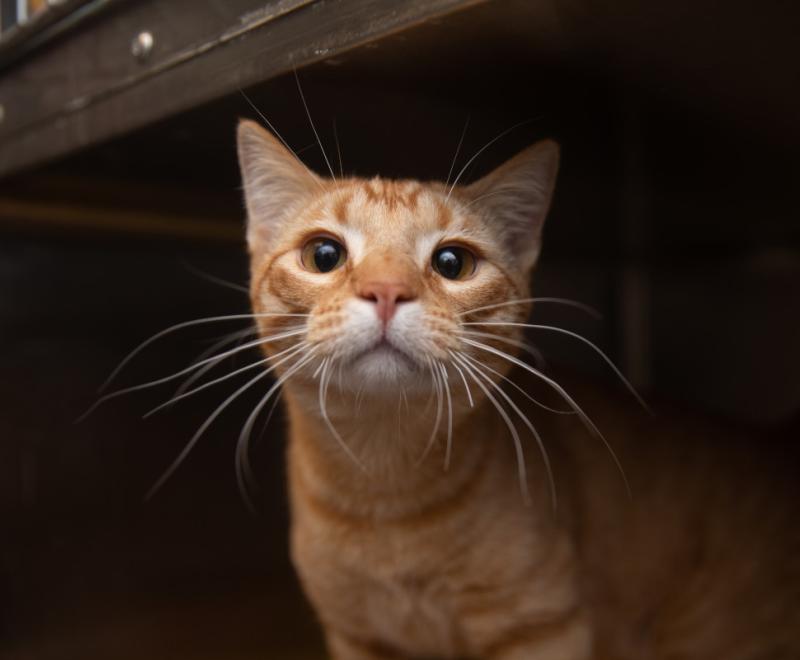New programs help save more dogs and cats in Nebraska
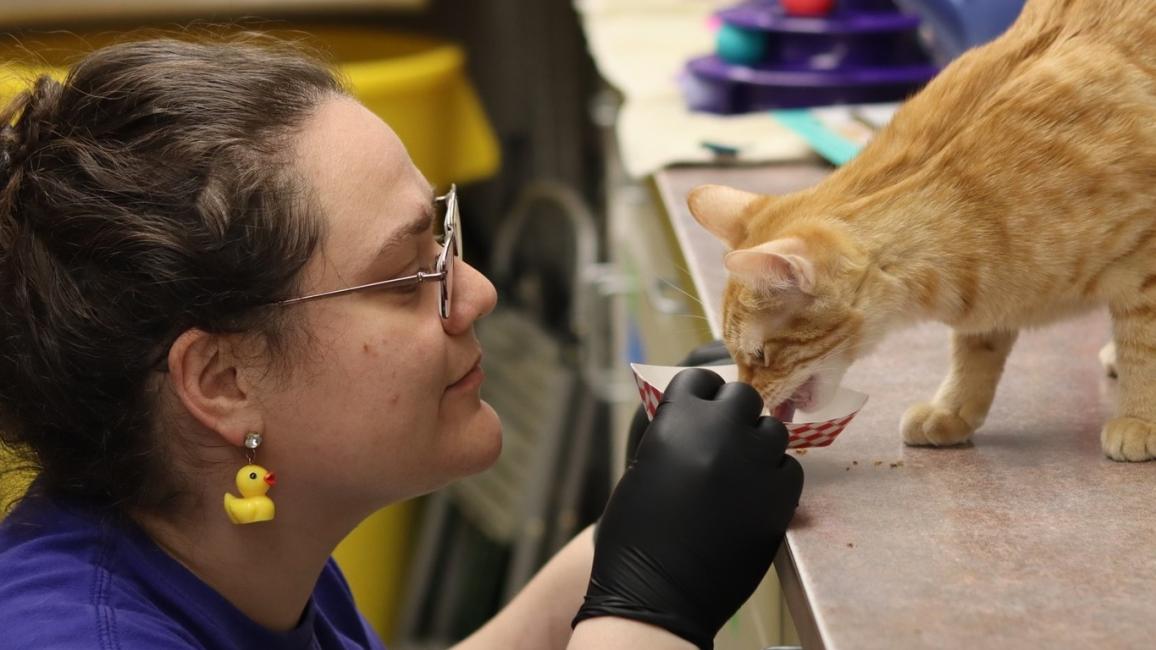
It’s been several years since Ben Clark, a commercial pilot for three decades, traded in his aviation headset for a set of keys to the “mini-paw,” a yellow minivan, trimmed in purple, and emblazoned with the logo of the Nebraska Humane Society.
Ben’s still in the transportation business, yes, but these days instead of ferrying jet-setting VIPs around the country, he’s driving VIFs (very important felines) through the streets of Omaha. He handles the final leg in transporting community cats back to their outdoor home neighborhoods following health checks, vaccinations, ear tipping, and spay/neuter surgery. It’s a key component of Nebraska Humane Society’s new community cat program.
Launched last fall, it’s one of several important developments at Nebraska Humane Society emanating from Best Friends’ national shelter embed program, which last July placed a Best Friends employee to work alongside Nebraska Humane Society’s leadership and staff. Made possible in part by a grant from Maddie’s Fund®, the national shelter embed program is one of the ways that Best Friends works with shelters around the country to save more pets’ lives and bring the country to no-kill in 2025.
That Best Friends employee is Jakie Hernandez, and during the nine months she’s been working with the Nebraska Humane Society staff, together they’ve implemented proven strategies and programs that have had a profound effect on lifesaving.
Most important of all, for four consecutive months — December 2023 through March 2024 — Nebraska Humane Society’s save rate (the percentage of animals who enter a shelter and leave alive) averaged more than 90%.
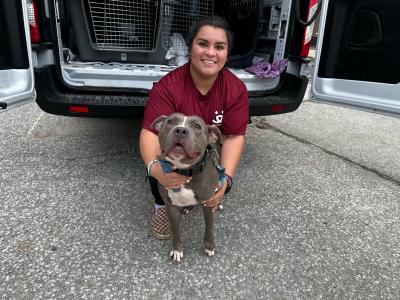
The benefits of collaboration
Sara Schmidt, vice president of Nebraska Humane Society shelter operations, says she was familiar with Best Friends. But it wasn’t until Tim Yeaglin, a Best Friends Central region strategist, called her in the summer of 2021 that she realized all the possibilities of a Best Friends collaboration.
“We just had some really great conversations,” says Sara. “Tim knew all about us, and it was like, oh my gosh, this support Tim is talking about is just what we need. We were struggling as an organization with just too much on our plates to really be able to move important new programs forward. It felt like we were just trying to get through each day, with no time to really look forward.”
Sara and Tim continued to talk, with Tim paying regular visits to Nebraska Humane Society. “I kept dropping the hint to them that we have this ability to bring in a team to do an assessment, which is a great benchmarking tool,” Tim says.
The assessment took place in September 2022, and its ensuing report included recommendations of possible changes to the dog behavior program and the creation of a community cat program. “We were using an old system of measuring dog behavior that was outdated,” says Sara. Tim suggested that they consider playgroups and trying a different way of working with dogs who may have challenges in a shelter environment.
In April 2023, Best Friends brought in Dogs Playing for Life, an organization that utilizes playgroup seminars and enrichment programs to teach shelter staff how to improve their dogs’ quality of life. Playgroups were an instant hit with the dogs and staff. “We invited all our staff and volunteers to come watch the initial training session,” says Sara, “and it energized everybody.”
[Magic of playgroups unveils dogs’ hidden sociability]
Playgroups proved to be a catalyst that led to more serious conversations about a possible embedded employee from Best Friends. “Everyone here was so pleased with playgroups that I wanted to keep the energy going,” Sara says. “And after we met Jakie, we loved the expertise she would bring and instantly felt she would be a really good fit with us.”
When Jakie reported for duty at Nebraska Humane Society in July 2023, she was immediately faced with the critical first step for any newly embedded Best Friends employee: Establish a strong relationship with the organization. “It was important that they got to know me and that I could gain their trust and explain options,” Jakie says. “It was also really critical for me to make sure I was hearing them and all of their concerns.”
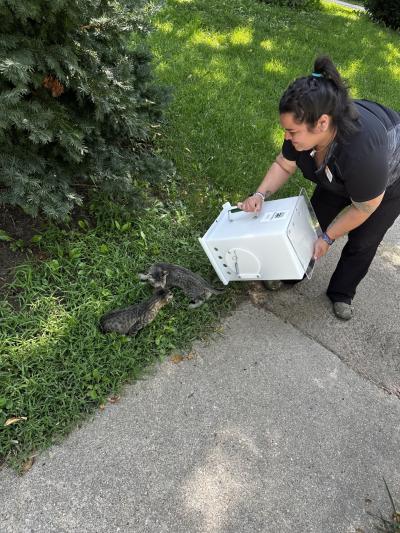
Rebranding the behavior team
Sara says: “Prior to Jakie joining us, our behavior team worked with a select number of dogs who displayed certain concerning behaviors. We wanted to move away from solely working on behavior modification and focus more on support and enrichment.”
To do that, it would be necessary for the team to think in a different way, and to that end, Best Friends recommended dissolving the behavior team as a stand-alone department, incorporating the staff into key departments, and rebranding them as “animal support.”
“We felt that the rebranding would more correctly reflect our mission,” says Jakie. “It was about providing complete support not just for behaviorally challenged dogs but all the animals. I wanted to be very clear on why we were doing this so that the team at Nebraska Humane Society doing the hands-on work understood the reasons behind it.”
Since the change, members of the animal support team are called “specialist, animal support.” And the focus has shifted to the team thinking more holistically about providing all dogs (and expanding to cats) in the shelter with whatever they need from the minute they arrive.
Sara says, “Identifying early on what those needs are — getting them into a foster home, out to a rescue group, or providing support in-house — makes us more efficient about meeting those needs and getting them out of the shelter as quickly as we can.”
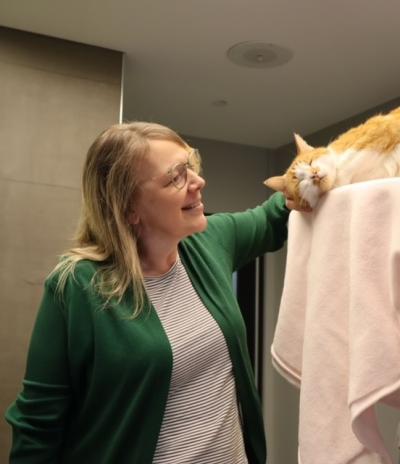
Helping community cats
The second key recommendation from the assessment was the creation of the community cat program and organization of related trap-neuter-vaccinate-return (TNVR) activities in the community. “While Nebraska Humane Society had done some components of a community cat program in the past, it had never really done a formal program and announced it publicly,” says Jakie.
Monica Vazquez, Nebraska Humane Society community cat program coordinator, says: “We had some pushback from the public (about returning cats to their communities following health checks, vaccinations, ear tipping, and spay/neuter surgery). Our staff and volunteers still hear it occasionally.” But they’re doing everything they can to share their stories and explain how the program greatly benefits cats and the community. Monica adds, “And we also tell (people): Our only other option would have been euthanasia.”
The new program can already point to success. “In the seven months since we started in September, we’ve returned about 345 cats back to their communities,” says Monica. “That’s 345 who otherwise would have been euthanized or still reproducing.”
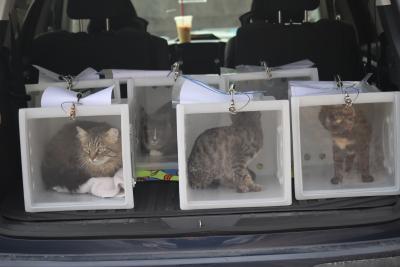
Ben holds down the fort
Everyone at Nebraska Humane Society — from Sara to Monica to Jakie — credits the retired pilot, Ben, for being the glue that holds the entire community cat program together.
“It’s just me and Ben doing the program,” Monica says. “Ben does all the returns for us and also helps out with some of the other TNVR groups here in Omaha. It’s true: I would never get anything done if Ben wasn’t here.”
Each evening or first thing in the morning, Ben receives a text from Monica listing the newly fixed cats in need of transportation home to the neighborhoods where they were trapped. “I go in anywhere between 11 a.m. and noon,” says Ben. “Monica provides me with a list of return locations and a map. I just verify the cats, and then I head out — sometimes with one cat and sometimes as many as six or seven.”
[Pilot becomes cat rescuer and TNR advocate]
When Ben’s not on the road for Nebraska Humane Society (covering 100-125 miles a week), he’s taking care of his own group of community cats who live around his home. “There was this mama kitty who had kittens hidden in another yard but decided to move her family under our shed. We trapped mama and got her spayed in April of 2023 and got the kittens neutered in May/June. The boys now live under our sunroom, and they are fed morning and evening. And even though mama moved a block away, she still returns to eat here in the morning and evening.”
Indeed, things are looking up for community cats in Omaha, says Jakie. “We recently had a meeting with four other rescue organizations, and three of them are the main trappers in the community here. We’ve let them know what we are doing with our program, and we want to bridge our relationships with them so we can work together to save even more community cats.”
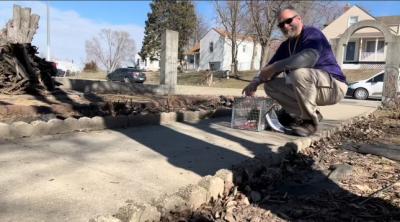
A role model for the future
Sara says she hopes Nebraska Humane Society’s relationship with Best Friends can be a guiding light for other organizations needing help.
“I remember saying to Tim back in 2021 that I wanted us to become the organization Best Friends reaches out to for a recommendation. I’d like to hear them say: ‘Hey, Nebraska Humane Society: You did such a great job implementing this program, and we have a shelter over here that’s struggling with a similar issue. Can we connect you?’”
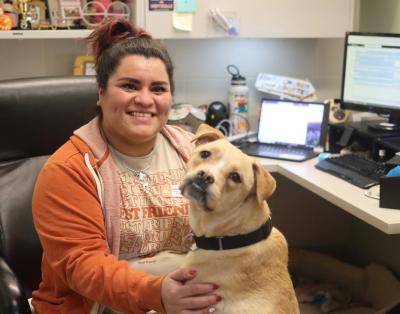
Let's make every shelter and every community no-kill by 2025
Our goal at Best Friends is to support all animal shelters in the U.S. in reaching no-kill by 2025. No-kill means saving every dog and cat in a shelter who can be saved, accounting for community safety and good quality of life for pets.
Shelter staff can’t do it alone. Saving animals in shelters is everyone’s responsibility, and it takes support and participation from the community. No-kill is possible when we work together thoughtfully, honestly, and collaboratively.
